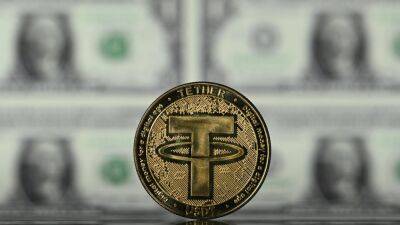Tether withdrawals top $10 billion as regulators raise alarm about stablecoins
In this article
Investors have yanked more than $10 billion out of tether in the past two weeks amid heightened regulatory scrutiny over stablecoins.
Tether, the world's largest stablecoin, has seen its circulating supply plunge from a record $84.2 billion on May 11 to around $73.3 billion as of Monday, according to data from CoinGecko. About $1 billion was withdrawn late Friday evening.
The cryptocurrency, which is meant to be pegged to the U.S. dollar, temporarily dipped as low as 95 cents on May 12 after another type of stablecoin, terraUSD — or UST — plunged well below $1. That resulted in a sell-off in UST's associated luna token, which in turn wiped out more than $40 billion in holders' wealth.
The fallout from the collapse of Terra, the blockchain behind UST and luna, sent shockwaves through the crypto market, with bitcoin and other cryptocurrencies tumbling sharply. That's causing concern for regulators.
«Whenever there's a failure or a catastrophe in crypto, the fear is always that someone will misread the situation and overcorrect in a position that's not helpful for the entire community writ large,» Kathleen Breitman, a co-creator of the Tezos blockchain, told CNBC.
«As much as I relish seeing things that don't make sense fail, there's always a tinge of like, 'Are people going to extrapolate from this that everything that's a stablecoin is unsound?' That's always the big fear.»
Unlike tether, UST wasn't backed by fiat currency held in a reserve. Instead, it relied on some complex engineering where price stability was maintained through the destruction and creation of UST and its sister token luna. Investors were lured in by the promise of 20% savings yields from Anchor, Terra's flagship lending platform, a
Read more on cnbc.com



 cnbc.com
cnbc.com











![Bitcoin [BTC] manages to see some green on the charts, but here’s the caveat](https://finance-news.co/storage/thumbs_400/img/2022/5/30/27711_h1oq.jpg)






